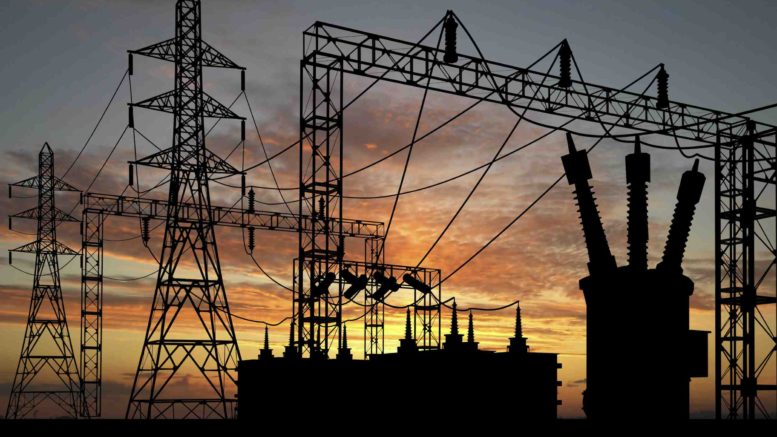Contributed from Queensland
When the news year starts on July 1, some Australian states will experience hefty rises in the price of electricity and gas.
Suggestions have been made that the price rises are driven by uncertainty over government policy over the future of energy generation, which is causing a growing dependence on gas to meet shortages during peak periods.
While there is a some truth to this, there is more to it.
For a start, the rising cost of gas is based on a deliberate government policy to peg it to the global price, which has been rising due to a global gas shortage, a problem that has been unnecessarily brought into Australia. The reason why this has been done is to assist gas companies to export. An outcome is that most of the gas produced by Australia goes overseas and is not used in Australia, thereby creating an artificial domestic shortage.
This is possible because the gas market is run as a cartel of three players, which can exercise significant control over price, despite being overlooked by the Australian Energy Market Operator. They are taking advantage of being able to charge higher prices than they would otherwise be able to.
However, the main issue is that an ongoing and successful community campaign for renewables and an end to dependence on coal has cornered a government hell bent on preserving dependence on coal for the benefit of powerful industry friends.
Finding it difficult to confront rising public opinion over the need to act, in relation to the threat of climate warming, government increasingly relies on stealth to continue its policy. A by product is that it causes confusion for everyone. Community campaigning has made it hard to build new coal powered power plants and the existing ones age, become less efficient and more expensive for the power companies to run.
There is yet another two matters that must be considered, to explain why electricity prices are rising so much.
The pricing mechanism is based on Electricity being sold in the wholesale market. This is where the electricity retailers then buy form the generating companies. The system was set up to set the conditions to divide up the profit, in a totally privatised electricity system.
Wholesalers have the incentive to sell the maximum quantity during peak periods, because this is when it fetches the highest price.It is this incentive to sell at the highest price that is squeezing peak capacity, rather than excessive demand, which has actually been declining for some time. Retailers are happy to oblige, because this is passed onto the consumer. It also happens that the same company is often both wholesaler and retailer. A cartel operates in the electricity market, in the same way as with the gas cartel.
Power companies have gone into a partial investment strike and deliberately pressuring the government to take on a harder pro-coal stance, while at the same time, provide greater assistance for them to make a transition to renewables over time.
This dual ambition is not as strange as it may seem. The power companies know that coal is a dying resource. In the short-run they want to maintain coal as long as possible, simply because the bulk of their capital stock is coal is locked in and they want to get the maximum use of it.
These companies also know that the days of coal are numbered and that they must eventually make the transition. This is more important than the minimal carbon trading scheme in operation. But they do not want to bear the cost and are keen to have this imposed on society by, means of greater government and taxpayer funded assistance.
It links in with the Finkel report and its recommendations. One calls for more gas powered generation to meet peak demand shortfalls. A need for what is called “dispatchable” energy sources is mentioned, meaning the use of gas turbines that can quickly be turned on or off, unlike the coal equivalent. It does not signal a turn against coal as the main provider, although there is some recognition that change is ultimately inevitable.
Finkel continues with the reliance on the existing pricing mechanism.There is no mention of the electricity and gas cartels and their ability to distort prices to their advantage. This makes the recommendations of limited practical use.
Nevertheless, a recommended clean energy target has been put forward on this basis, for the stated purpose of bringing greater policy clarity. Despite the serious limitation, it has managed to cause the Liberal party factions to draw swords and exposed the fragility of the government. It is faced with the dilemma of working out how to keep Coal has been a major contributor on side, while at the same time dealing with the threat of the groundswell of opposition. They are doing a bad job of it.
Those most closely tied with coal mining interests, notably the 25 or so members of parliament led by former prime minister Tony Abbott, are facing off those more likely to go along with the Finkel recommendations and led by prime minister Malcolm Turnbull.
Those most closely tied with coal mining interests, notably the 25 or so members of parliament led by former prime minister Tony Abbott, versus those a little more amenable to alternatives, led by Malcolm Turnbull. The effect of this, at least in the short-term, has been to paralyse the government more than it was already.
So much for coming out with a clearer policy.


When MPs, elected to act in the best interests of their Electorate and the Country, refuse to accept the urgent recommendations of the Chief Scientist for dubious or purely ideological reasons, it can be considered as gross negligence at the criminal end of the spectrum.